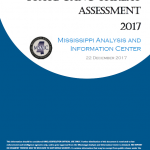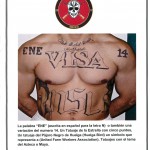
Intelligence in this assessment is based on data from 125 local, state, tribal, and federal law enforcement agencies through statewide intelligence meetings, adjudicated cases, and open source information. Specific gang data was collected from 71 law enforcement agencies through questionnaires disseminated at the statewide intelligence meetings and the 2017 Mississippi Association of Gang Investigators (MAGI) Conference. The intelligence meetings, sponsored by the MSAIC, occurred in the nine Mississippi Highway Patrol (MHP) districts.

